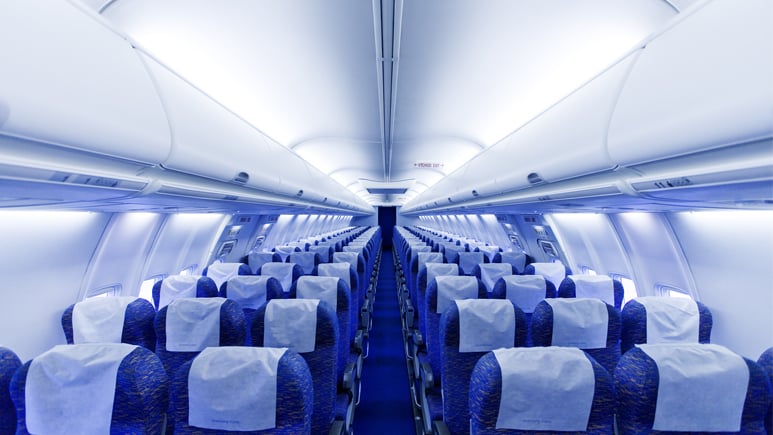With the demand for air travel continuing to increase, airlines are buying aircraft and refurbishing older ones at record levels. In fact, one key aviation market segment is expected to grow more significantly compared to all others—aircraft cabin interiors. The aircraft interiors market is worth an estimated $26 billion U.S. dollars and is predicted to jump to nearly $39 billion by 2022. Since older aircraft are flying longer, interior updating and refurbishment is a significant way to enhance the customer’s flying experience. There are also good financial reasons to update even relatively new airplane interiors.
Interior Investing
The thought of grounding an airplane for interior refurbishment can lead to fears of short-term lost revenue and expensive improvement costs. Yet not updating your airplane’s interior actually leads to higher costs in the long run. Here is why:
- Upgraded interiors support your airline’s brand through differentiation. Ask any marketing executive about the importance of your airline’s brand. Aircraft cabin interior design is one of the few ways an airline can influence the brand experience of its passengers. Do you want your airplane interiors to reflect fresh and modern or tired, dirty, and drab? Often when an airline gets new airplanes, they update their current fleet interiors to match for a consistent experience across all models.
- Good aircraft interior design improves crew working conditions, operational efficiency, and safety, thereby improving the customer experience. If your flight crew enjoys its working environment, they will enhance the customer experience.
- Spend as much or little as you want or need. Cabin updates can range from minimally invasive superficial changes to a complete interior teardown and reconfiguration, including everything from seats, lavatories, galleys, lighting, and carpeting to Inflight Entertainment and Connectivity (IFEC) systems.
- Upgrades in all cabin classes pay dividends by generating repeat customers who enjoy their flying experience with your airline. Passengers want to feel they are getting more value for their money. Bright and stylish cabins create an impression of luxury and quality that leaves passengers with a greater feeling of well-being. Based on this, they may even choose the cabins of one airline (yours) over another.
- Reduced cabin weight. Many of these upgrades can reduce cabin weight, making a lighter aircraft that burns less fuel, making it more efficient to operate. This opens up endless opportunities for new routes with fewer stop-overs and greater cost savings.
It is clear that aircraft interior refurbishment has many benefits. Now the question is, what upgrades should you make?
Interior Options
While the three most rapidly growing areas of interior upgrades are IFEC systems, seats, and carpeting, there are extensive options for the entire cabin.
Lighting
LED lights have several advantages that make their installation worthwhile. They weigh less, are more reliable, use less power, and have significantly reduced maintenance costs. LED lights enable airline branding and mood lighting concepts that change with different aspects of the flight, such as boarding and food service, or can simulate sunrise and sunset to help passengers’ inner clocks adapt to new time zones.
Related to lighting are electrically dimmable windows. The latest versions are easily retrofitted to current windows and can switch from clear to blocking 99 percent of light in less than a second. Passengers no longer have to choose between a view with sun glare or total darkness. These can also be coordinated with LED mood lighting or controlled by the flight crew. Eliminating the old sliding window shades reduces weight, maintenance, and cleaning costs.
Colors and Carpets
From bright bulkheads, galleys, and lavatories to upgraded carpets, colors, and premium materials can make older aircraft feel new once again. There are new methods for using wall paneling and colors to enhance the look of windows, making them appear larger. Aligning interiors across a fleet supports an airline’s brand identity and gives customers a consistent flying experience.
Seats and Bins
The sheer enormity of seating variables is too extensive to cover here. Suffice it to say that new seating options enable airlines to create new cabin classes—generating both revenue and legroom—by changing seat width and available pitch through less bulky upholstery and composite frames. New seats are also much lighter, which creates a significant weight reduction when replacing older ones.
Redesigned overhead bins can eliminate passenger frustration stemming from lack of space for their carry-on and the hassle of checking bags at the gate—all without taking space away from seated passengers or making the cabin feel more cramped.
IFEC
Most fliers today expect some level of connectivity, access to power for charging devices, and inflight entertainment, whether through seatback IFEC systems or over in-cabin Wi-Fi. Some airlines have even introduced gate-to-gate Wi-Fi service, so customers can remain online from takeoff to touchdown. By adding new systems and upgrading older ones, airlines can tap into the additional revenue from e-commerce, advertising, and premium content—all of which generated $1 billion in sales during 2018. Many older seatback screens can be upgraded to larger, lighter ones, and for aircraft without them, ground-based or satellite link Wi-Fi systems allow passengers to use their own devices to access content. This enables the overall system to be small, saving on weight and maintenance.
While these are just a few of the many potential interior upgrades available, implementing them can help improve the customer experience, enhance operations, save money, boost airline reputation, and even curb passenger aggression.
Refurbish Your Interiors with AerSale®
Ready to upgrade your interiors? The first step starts with AerSale. As part of its extensive MRO suite of services, AerSale provides customized interior reconfigurations and modifications to keep your fleet profitable for you and pleasing for your customers.
For more information on how AerSale’s aircraft interior design solutions and integrated global network can keep your aviation assets refreshed and working for you profitably from first flight to final flight, visit www.aersale.com.
About AerSale
A global aviation leader celebrating its 10-year anniversary, AerSale specializes in the sale, lease, and exchange of used aircraft, engines, and components, in addition to providing a broad range of integrated maintenance, repair, and overhaul (MRO) services and engineering services for commercial aircraft and components. AerSale also offers asset management services to owners of end-of-life aircraft and engine portfolios. Headquartered in Coral Gables, Florida, AerSale maintains offices and operations in the United States, Europe, and Asia.
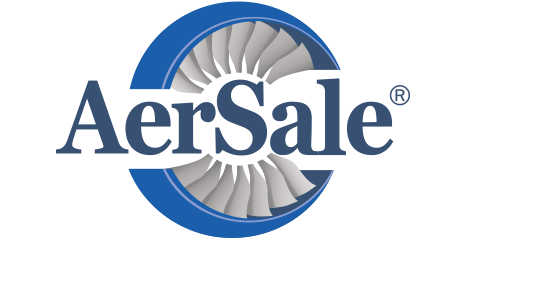
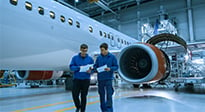
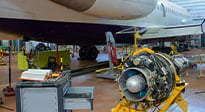
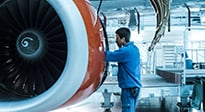
 OUTSTANDING PEOPLE AND CAPABILITES
OUTSTANDING PEOPLE AND CAPABILITES

